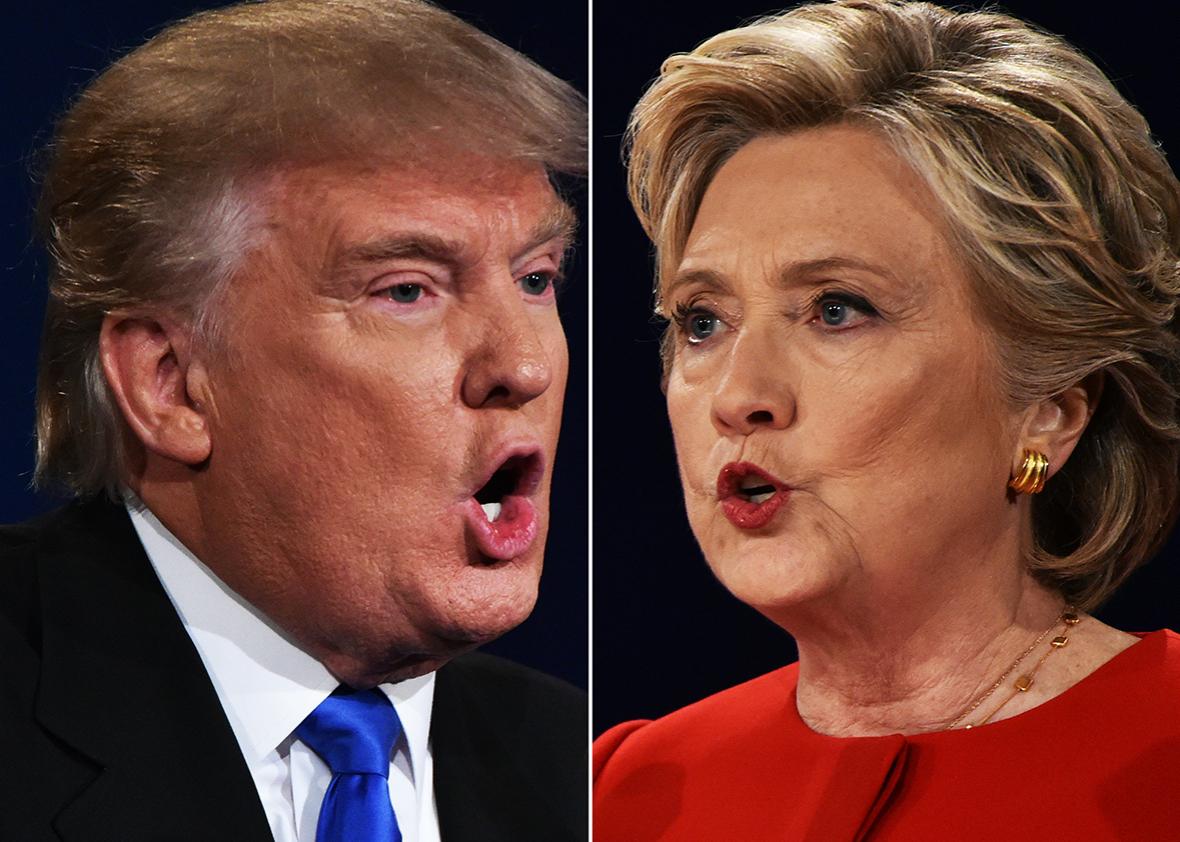This article appears in slightly different form in the Financial Times.
Donald Trump and Hillary Clinton agreed about almost nothing in their first presidential debate, but on one point their views seemed strangely harmonious. Neither of them chose to describe anything resembling a bright future for the U.S.
Trump’s pessimism is calculated and demagogic rather than visceral. His first statement in the debate was about jobs “fleeing the country” for Mexico. As many real-time fact-checkers were quick to point out, the U.S economy has added 14.9 million jobs since the bottom of the recession in 2010. For the rest of the evening, the truth squads were kept busy by Trump’s grim blend of the untrue and the unverifiable. The U.S., he said, is being robbed by every other country in the world while being destroyed from within by illegal immigrants, crime, disorder, and terrorism. He didn’t use his familiar line that, “our country is going to hell,” but everything he said amounted to the same point.
To some extent, the party out-of-office has to argue that conditions are terrible. Why else demand a change in direction? What is more surprising is that Clinton, who represents continuity with a relatively popular president and a strong economy, has not done a better job of conveying optimism. Since Ronald Reagan defeated Jimmy Carter in 1980, the one thing every politician knows for certain is that sunny defeats cloudy. Versions of Reagan’s optimism were baked into the slogans of Bill Clinton in 1992 (“Don’t Stop Thinking About Tomorrow”) and Barack Obama in 2008 (“Hope” and “Yes We Can!”)
Clinton’s chief slogan, “I’m With Her,” lacks any resonance of Reagan’s “Morning in America”. Its absence speaks to her limitations as a politician. Clinton is a master of policy but finds herself challenged in weaving her proposals into an affirming vision or narrative. For her, the word “future” triggers banal comments about her grandchildren. And given the vileness of her opponent, she has inevitably run a highly negative campaign.
The bipartisan dourness also reflects the pervasive mood in the U.S. At the time of the Republican convention in July, a mere 17 percent of people were satisfied with the way things were going in the country, according to Gallup. That number has ticked up slightly, but people still say that America is on the wrong track by a margin of more than 2 to 1.
Economic statistics paint a far rosier picture. The Census Bureau recently reported that household income grew by 5.2 percent in 2015—the largest single-year increase since 1967. For a change, those gains were widely shared; 3.5 million people rose above the poverty line, which is also a post-1960s record. The unemployment rate stands at 5 percent, a level last seen in 2008. A strong dollar and near-record stock market levels reflect the age of technological miracles and wonders in which we live. American companies are leading the way in robotics, drones, driverless cars, space exploration, stem-cell therapies, and more.
Other social metrics look even more positive. Violent crime has been declining steadily for 25 years. The Affordable Care Act wants amendment but has already been responsible for lowering the share of Americans without health insurance from 16 percent to 9 percent. In 2010, 496 American soldiers died fighting in Afghanistan. So far in 2016, the number killed in action is one. And relative to other countries, the position of the U.S. looks even better. That it remains the destination of choice for immigrants around the world requires little explanation.
If things are going so well, why then is the mood so sour? In part, the negative numbers convey anxiety about societal upheaval, especially on the part of those at risk of losing out.
Less-educated white men who are Trump’s core supporters are much more likely to say that the country’s best days are behind it. The automatic advantages attached to whiteness are declining, and because fewer and fewer unskilled jobs can support a middle-class standard of living, they face painful economic dislocation. Younger African Americans and Latinos are far more optimistic. So long as they can obtain post-secondary education, their prospects are vastly brighter than those of previous generations.
Hyperbolic pessimism also flows from the paradox of rising standards, by which reform makes problems look worse just when they are changing for the better. Unjustified police shootings of black men are anything but a new phenomenon in the U.S. Evidence from cell phone videos, a national outcry about the issue, and the possibility of punishment for perpetrators are the novelties. There is a growing consensus against mass incarceration and other long-accepted forms of racial injustice. A parallel awakening about sex abuse and gender discrimination is making the formerly tolerated intolerable.
None of this is to deny the seriousness of problems ranging from middle-class income stagnation, to neglected infrastructure, to endemic gun violence. But stepping back, it looks as if the country is mainly suffering from an extended funk over the financial crisis combined with unease about rapid social and technological change. We optimists know that the pessimists will always get more intellectual respect. But are things really so bad after all?
